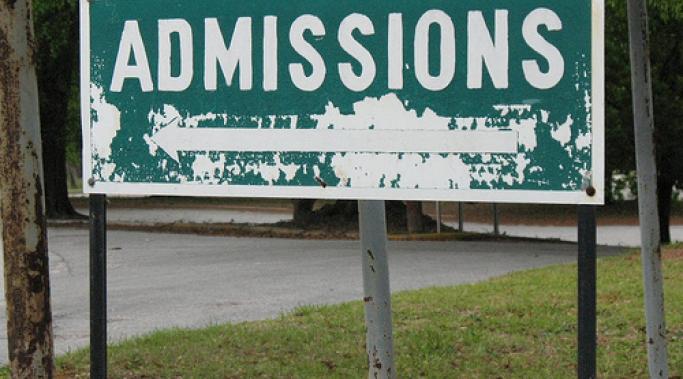When it comes to understanding Dissociative Identity Disorder, most people get too hung up on the concept of the alternate identity. Identity alteration is widely and mistakenly accepted as the essence of what DID is. And so the two most popular theories about the development of Dissociative Identity Disorder revolve around the existence of alters: the Broken Vase Theory, and the Multiple Vase Theory. Neither are satisfactory explanations for how DID develops and ultimately both theories' inaccuracies stem from the same error: the assumption that early childhood identity is cohesive and intact when in fact it is anything but.
Stigma and Misconceptions
One of the two most popular theories about the development of Dissociative Identity Disorder states that if you take a child with an intact identity and apply severe force for long enough, the child’s identity will splinter into pieces. I call it the Broken Vase Theory. I also call it wrong.
The Courage to Heal is a self-help book – “A Guide for Women Survivors of Child Sexual Abuse” - that has enjoyed widespread popularity among both those living with Dissociative Identity Disorder and many of their treatment providers since its first publication in 1988. I first read it six years ago and found it helpful in some ways. But subsequent readings have illuminated for me the book’s biggest flaw: its reckless approach to traumatic memory.
I write about Dissociative Identity Disorder in part because I'm disturbed by the sheer volume of false and misleading information about DID. It bothers me that an overwhelming number of online resources are teeming with misconceptions so profound that the end result is a definition of the disorder that further shrouds it in mystery and controversy. Not to mention the fact that nobody seems able to explain it without relying on a misnomer, Multiple Personality Disorder, to do so. It took me a long time to wade through all the jargon and arrive at a definition of Dissociative Identity Disorder that accurately explains my experience of it.
Recently a reader asked how to get over the feeling that her sister is faking dissociative identity disorder. If you doubt your friend or family member's diagnosis, I think it's important to identify why you're skeptical. What in particular has you questioning it? Write it down, and be specific. Now find out everything you can about each of those nagging suspicions. I'm willing to bet a healthy majority of them are based on common misconceptions about dissociative identity disorder. Of course, that doesn't necessarily mean you're wrong. Sometimes people who say they have DID don't have it at all. That could be because they're pretending for some perceived gain, e.g. sympathy. But I believe the discrepancy is more likely due to misdiagnosis and genuine confusion.
One of the problems I have with the mythology surrounding dissociative identity disorder is that it makes finding support and treatment difficult. DID is hard enough to contend with on its own without having to fight your way through fallacies and stereotypes just to get help. Some common misconceptions about dissociative identity disorder come from entertainment media. But DID itself, in the hands of those who don't understand it, is also a source of prevailing myths about the disorder.
One of the most persistent myths about dissociative identity disorder (DID) is that people with it are schizophrenic. Schizophrenia and DID are generally considered synonymous with each other when, in fact, they're two entirely different disorders. There's no relationship between dissociative identity disorder (formerly known as multiple personality disorder) and schizophrenia at all. People more educated than I could write entire books about the differences between these two chronically misunderstood disorders. I focus on what I see as the dead giveaway: the issue of identity.
In an email conversation I had last week with someone who also has Dissociative Identity Disorder, the issue of hospitalization came up. I was impressed by this person's pro-active perspective. He appeared to accept the fact that inpatient stays are sometimes a part of the recovery process. Historically, my attitude has been much different. But I've decided his forward-thinking approach is healthier.
I was sitting in a group therapy session once when the leader succinctly described the perception those of us with multiple personalities have of ourselves as groups of entirely separate people by writing the following on the white board: Me/Not Me. This is me. That is not me. For instance, I am a writer. But if another member of my system were assigned the task of writing this blog post, we would see how the Multiple Personality Disorder label came about. Some might have done a passable job. Others would have struggled mightily only to ultimately produce a choppy, thoroughly unimpressive piece of work. I am me. They are not me.
I Can't Tell You I Have DID. You Don't Understand.
I no longer hide the fact that I have Dissociative Identity Disorder. The major players in my life know I have DID. When it comes up in conversation, when not mentioning my diagnosis would require lying or warping the truth, I tell people I have DID. It's a new way of living for me and it's teaching me a lot about myself and others. One of the most surprising things I've discovered is that just as there are assumptions about DID in the general public, there are assumptions about the general public in the multiple community. Those assumptions obscure the potential for acceptance and support, and create barriers to understanding dissociative disorders.









